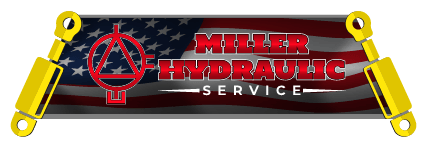5 Common Defects That Undermine Hydraulic Cylinder Performance

Hydraulic cylinders influence the hydraulic systems' overall performance. Using a defective cylinder lowers your operating efficiency, increasing downtime and production expenses. Moreover, delaying repairs exacerbates the condition, resulting in unnecessary rebuild or replacement costs. This blog outlines common hydraulic cylinder defects.
1. Cylinder Misalignment
Using a misaligned cylinder undermines your hydraulic system's loading capacity. For example, misalignment often causes side loading, inhibiting efficient cylinder retraction. You may not notice the misalignment unless you monitor your system's output over time.
A common cause of misalignment is using the wrong cylinder mount. A cylinder mount's primary function is to maintain the right cylinder position. Factors like load capacity and stroke size influence the best-fit cylinder mount. For example, long strokes increase the risk of misalignment, necessitating mounts that are more resilient.
2. Bent Rod
Using the wrong rod diameter may also undermine your hydraulic cylinder's efficiency. A cylinder rod is integral to delivering the right force or power for specific tasks. A weak cylinder rod increases its chances of bending under large loads. A bent rod causes power loss, reducing your hydraulic system's energy efficiency.
Cylinder rods should also comprise the right material. Remember, materials offer different mechanical and chemical properties. For example, some materials offer superior tensile strength, meaning they can hold larger loads.
Additionally, cylinder rods should use materials that can withstand the hydraulic system's operating temperature. Usually, manufacturers account for such factors when designing and building cylinder rods. However, you may have installed the wrong cylinder rods, predisposing your hydraulic system to failure.
3. Cylinder Ballooning
Hydraulic systems leverage their design and build for optimal efficiency. For example, the cylinder diameter should match the seals, ensuring little to no energy loss. However, your hydraulic cylinder may balloon, altering the system's efficiency.
First, ballooning creates gaps between the cylinder walls and seals, allowing high-pressure fluids to escape. You may notice that your hydraulic system no longer has its initial power or cannot support the same load. Moreover, the fluid leak may cause localized heating and wear out the seal over time until your hydraulic system fails.
4. Cylinder Corrosion
Water is possibly the biggest inhibitor of hydraulic system efficiency. It corrodes hydraulic cylinders and rods, compromising their surfaces. For example, water leaks may cause the cylinder barrels to rust, increasing friction with the seals.
In extreme situations, corrosion may cause pitting, altering the cylinder's surface integrity. Pitting poses significant operating challenges, especially when you cannot reverse it through a simple repolish. You might have to suspend operations for a while to allow adequate servicing to restore its smooth surface.
Corrosion also contaminates your hydraulic system's fluids. Contamination often alters the fluid's properties, reducing its efficiency. Thus, you might need to clean or replace the hydraulic fluid depending on the extent of the contamination.
Cylinder corrosion should be a top concern for people using or storing hydraulic systems outside. Outside storage exposes your hydraulic cylinder to weather elements that wear out its components, predisposing it to leaks. Thus, an easy remedy would be to cover your hydraulic cylinders when not in use, or build a shed to protect them from direct sun and rain exposure.
5. Defective Bearings
Bearings transfer motion between moving components, ensuring proper cylinder clearance. Occurrences like mechanical shock and overloads may damage the bearings, impacting your hydraulic cylinder's efficiency.
Remember, bearings maintain smooth cylinder clearance. Mechanical shocks often damage the bearings' components and alter their movement. For example, the shock may destroy eye bearings, resulting in skewing.
Always monitor your hydraulic cylinder to timely detect arising defects. Otherwise, waiting until your hydraulic system breakdowns may cost you significant repair expenses. Consider scheduling an inspection or maintenance with Miller Hydraulics Service, Inc. Our technicians offer onsite services and will restore your hydraulic cylinders to their optimal performance.





